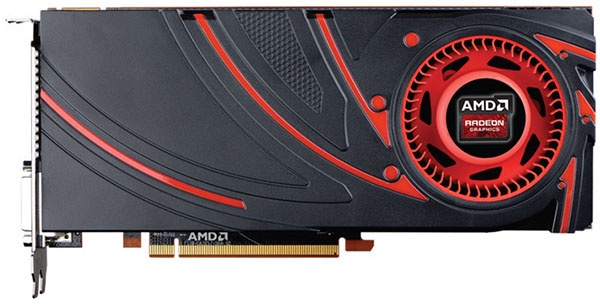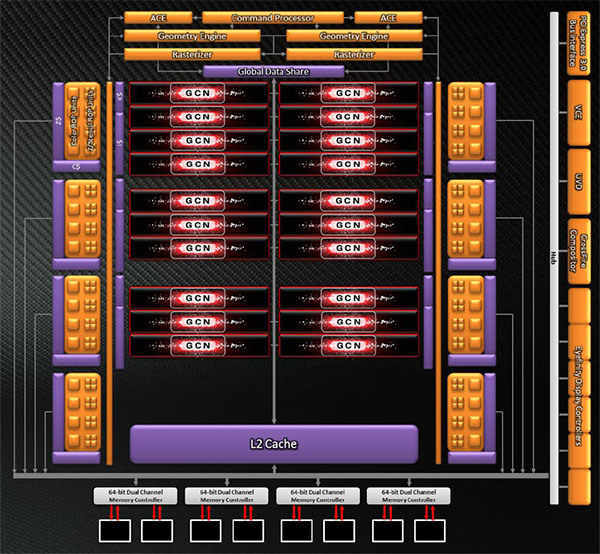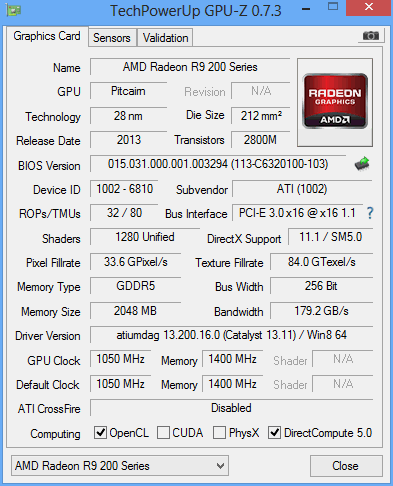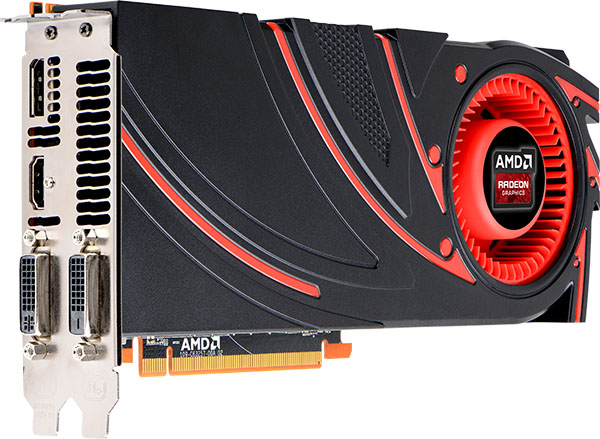AMD Radeon R9 280X, R9 270X, And R7 260X: Old GPUs, New Names
AMD is introducing a handful of new model names today, based on existing GPUs. Do the company's price adjustments make this introduction newsworthy, or will the excitement need to wait for its upcoming Radeon R9 290 and 290X, based on fresh silicon?
R9 270X: Pitcairn Gets A Little Boost
When the Radeon HD 7870 launched, it sold for $350. Now, you can find the cards going for somewhere between $185 and $200. Incidentally, AMD wants to introduce its R9 270X, based on an ASIC it’s calling Curacao (but is every bit similar to Pitcairn on paper), at the upper end of that same range: $200.
Although this isn’t nearly the savings story we heard from the R9 280X, AMD probably isn’t feeling pressured by the 270X’s primary competition. Nvidia’s GeForce GTX 660 with 2 GB is currently selling for about $200 as well, and it doesn’t keep up with Pitcairn (just prior to launch, Nvidia announced the 660 is dropping to $180).
Fortunately, for roughly the same price, AMD does bolster the R9 270X’s performance a little.
The Radeon HD 7870 had a Pitcairn GPU with 1280 shaders, 80 texture units, and 32 ROPs on it. A 1000 MHz core and 1200 MHz memory clock were ample for a solid gaming experience at 1920x1080, and an aggregate 256-bit bus with 2 GB of GDDR5 memory helped facilitate high detail settings.
Likewise, R9 270X brings to bear 1280 shaders, 80 texture units, and 32 ROPs. Its Curacao GPU notches up 50 MHz to 1.05 GHz, and the 2 GB of GDDR5 on our press sample runs at 1400 MHz (or 5.6 GT/s). There will be 4 GB models, AMD says, but they’ll be a bit pricier than the 2 GB version’s $200. Whereas the 7870 bore a 175 W board power, R9 270X is rated for 180 W. Fortunately, the small bump is meager enough that you’ll still find yourself using two six-pin auxiliary connectors.
Third-party implementations will likely differ in the display outputs that get exposed, but AMD’s reference model features two DVI outputs, HDMI, and DisplayPort.
Get Tom's Hardware's best news and in-depth reviews, straight to your inbox.
Current page: R9 270X: Pitcairn Gets A Little Boost
Prev Page R9 280X: The Tahiti GPU’s Second (Or Third?) Lease On Life Next Page R7 260X: TrueAudio’s First Outing On The Back Of Bonaire-
CaptainTom Wow what's with the AMD hate? As it stands they are doing the same thing Nvidia did except without the outrageous prices. The GTX 770 wasn't a great deal when the 7970 was $50 cheaper. Have fun trying to run BF3 with 2GB of VRAM...Reply -
slomo4sho Nothing revolutionary but better prices I suppose.Reply
The MSI R9 280X Gaming at $299 appears to outperform the GTX 770 at 1600P and is within margin of error at 1080P according to Techpowerup. Not a bad value at $100 less and still overclocks well:
http://www.techpowerup.com/reviews/MSI/R9_280X_Gaming/26.html -
jimmysmitty So long story short, if you have a HD7970GHz then these do nothing for you.Reply
Best to hold out till the reviews on the R9-290X I guess. But considering the specs I hope for at least 20% performance increases over a 7970. -
Shankovich What happened to Chris? I didn't see this kind of hate with all of the 700 series rebrands. Also, to the Canadians here, grab the $270 7970 GHz edition cards while you still can.Reply -
BigMack70 I don't like this new strategy AMD and Nvidia are taking of rebranding an old series at improved price points and then releasing only one new chip at a stupidly expensive price point.Reply
Are the days of (nearly) annual simultaneous full line GPU launches from $100-500 with a dual GPU chip to follow at $750-1000 really over? -
cangelini Hate? The R9 280X won an *award*. I think Tahiti at $300 is pretty much brilliant.Reply
I wrote one of the least flattering GTX 780 stories out there. I only identified a couple of situations where a Titan made any sense at all. And although the 760 *did* change the balance at $250, that card still didn't get an award. I liked the 770 for the simple fact that it delivered better-than-680 performance for close to $100 less.
The rest of AMD's new line-up is a lot like what exists already. Again, the 7870 is a better value than 270X. So what are you getting worked up over? The fact that I'm pointing out these aren't new GPUs? They're not. ;) -
Shankovich Ok Chris, I agree with you, sorry for the over reaction. But I really don't like how nVidia made price increases for some of the rebrands. Looking forward to your 290 and 290X reviews :DReply -
ingtar33 i'll take a 7950 at $129 thank you very much (or two). There is a major retailer selling them for that this week. Best buy all year. two 7950s for the price of one r9-280x? yeah... i'll do that all day every day.Reply -
tomfreak Radeon 7790 has true Audio = but not enabled boooooo = as a 7790 owner I somewhat disappointed :( . Anyone have any idea if we can crossfire 1GB 7790 and 2GB 260x?Reply -
net_nakul By the time a R9 380X comes out, the GCN Tahiti XT achitecture may be 4 years old (assuming end of 2015). AMD better come up with an awesome new architecture by then, considering the R&D time they have.Reply
That goes to you too Mr. NVIDIA




